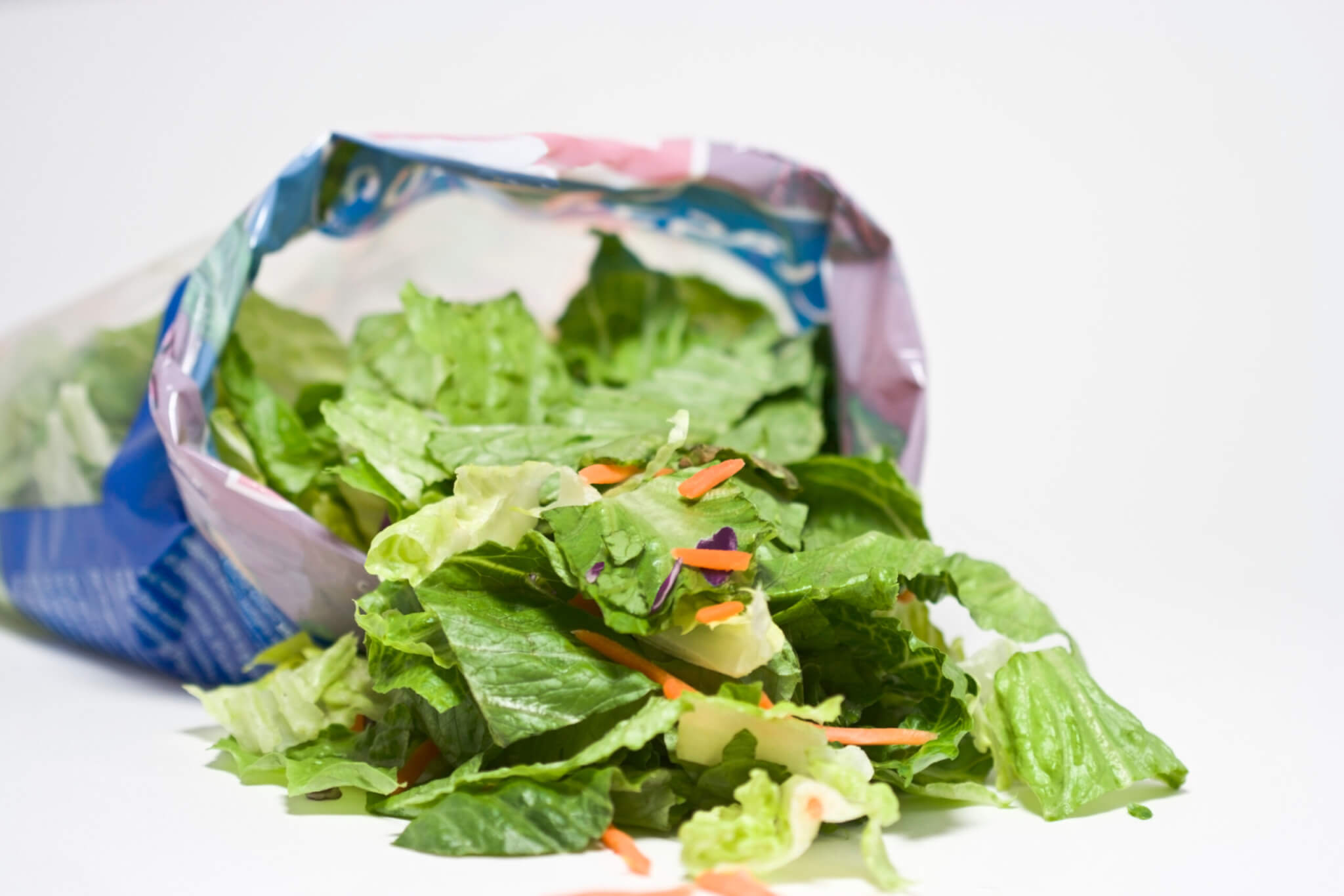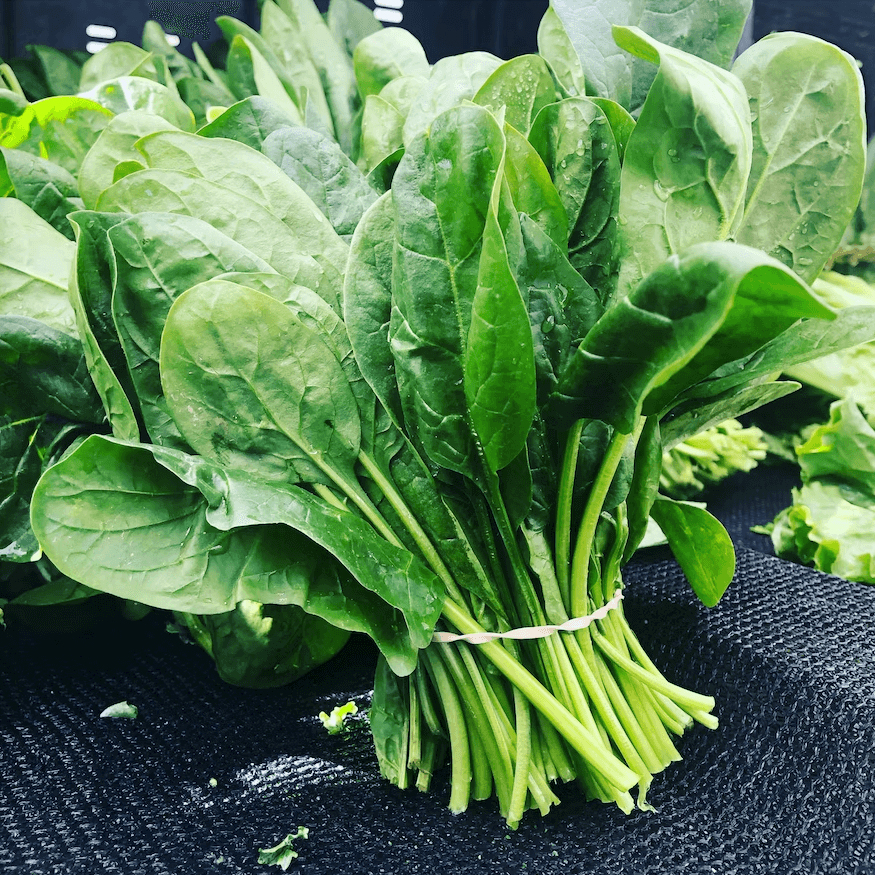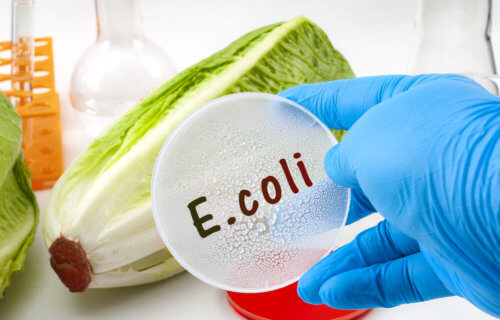URBANA, Ill. — Green veggies are a staple of healthy diets, but fresh produce can also contain harmful pathogens if not cleaned properly before eating them. Lettuce, for example, is a frequent victim of recalls due to food-borne illnesses across the United States. Now, researchers from the University of Illinois Urbana-Champaign say the best way to stop E. coli contamination on lettuce is by keeping the leafy green refrigerated.
Escherichia coli (E. coli) bacteria is found in the stomachs of both humans and animals, but certain strains can result in awful symptoms like severe cramping, vomiting, and diarrhea. The research team assessed factors affecting E. coli contamination across five different leafy greens (romaine lettuce, green-leaf lettuce, spinach, kale, and collards) to reach their conclusions.
“We are seeing a lot of outbreaks on lettuce, but not so much on kale and other brassica vegetables. We wanted to learn more about the susceptibility of different leafy greens,” says lead study author Mengyi Dong, now a postdoctoral research associate at Duke University, in a media release.
Dong conducted the research as a doctoral student in the Department of Food Science and Human Nutrition (FSHN), part of the College of Agricultural, Consumer and Environmental Sciences (ACES) at the U. of I.

During the study, researchers infected whole leaves from each of the vegetables with E. coli O157:H7. Then, they observed what happened following storage at 4°C (39°F), 20°C (68°F), and 37°C (98.6°F). Ultimately, this approach led to the discovery that susceptibility appears determined by a mixture of temperature and leaf surface properties including roughness and natural wax coating.
“At room temperature or higher, E. coli grows very fast on lettuce, but if lettuce is refrigerated at 4° C (39° F), we see a sharp decline in the E. coli population. However, for waxy greens like kale and collard, we get the opposite results. On these vegetables, E. coli grows slower under warmer temperatures, but if it is already present, it can survive longer under refrigeration,” Dong explains.
Still, kale and collard are generally less susceptible to E. coli contamination than lettuce. Moreover, those veggies are usually cooked, which kills or deactivates E. coli, while lettuce is usually eaten raw. Washing off and rinsing lettuce certainly helps, but even that doesn’t always remove all the bacteria because of its tight attachment to the leaf.
Study authors also exposed cut leaves to E. coli O157:H7 in order to compare the intact surface of a whole leaf to the damaged surface of a cut leaf.
“Whole leaves and freshly cut leaves present different situations. When the leaf is cut, it releases vegetable juice, which contains nutrients that stimulate bacterial growth,” Dong continues.
However, researchers note that spinach, kale, and collard juice actually exhibit antimicrobial properties that are protective against E. coli.

Next, in an effort to further explore these results, the research team isolated juice (lysate) from kale and collards and applied that liquid to lettuce leaves. This led to the determination it is viable as a natural antimicrobial agent. Potential applications include antimicrobial spray or coating to better control food-borne pathogen contaminations at both the pre-harvest and post-harvest stages.
“We can’t completely avoid pathogens in food. Vegetables are grown in soil, not in a sterile environment, and they will be exposed to bacteria,” concludes study co-author Pratik Banerjee, associate professor in FSHN and Illinois Extension specialist.
“It’s a complex problem to solve, but we can embrace best practices in the food industry and food supply chain. There’s a lot of interest from the research community and federal agencies to address these issues, and the USDA imposes high standards for food production, so overall the U.S. food supply is quite safe.”
In conclusion, study authors stress they don’t want to stop people from eating fresh fruits and vegetables. That being said, it’s key to follow the proper food safety guidelines, wash lettuce thoroughly, store it in the refrigerator, and pay close attention to any food safety recalls in the local area.
The study is published in the journal Food Microbiology.
